#Adam Chmielowski
Text

Adam Chmielowski - Abandoned clergy house (1888)
675 notes
·
View notes
Text
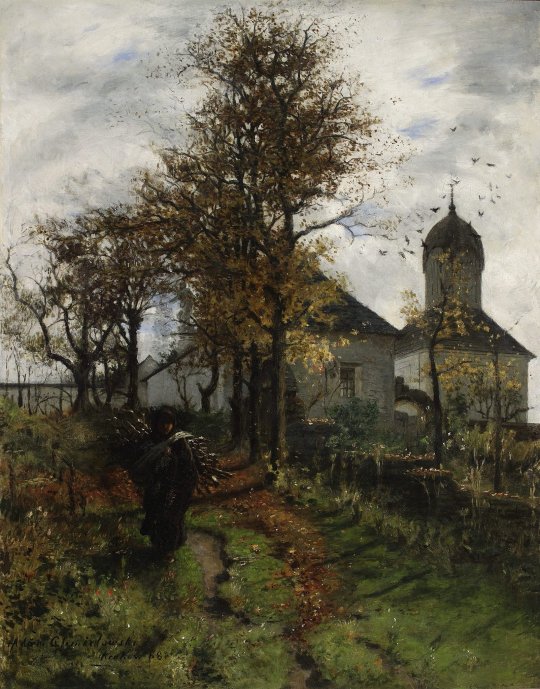
Adam Chmielowski
158 notes
·
View notes
Text
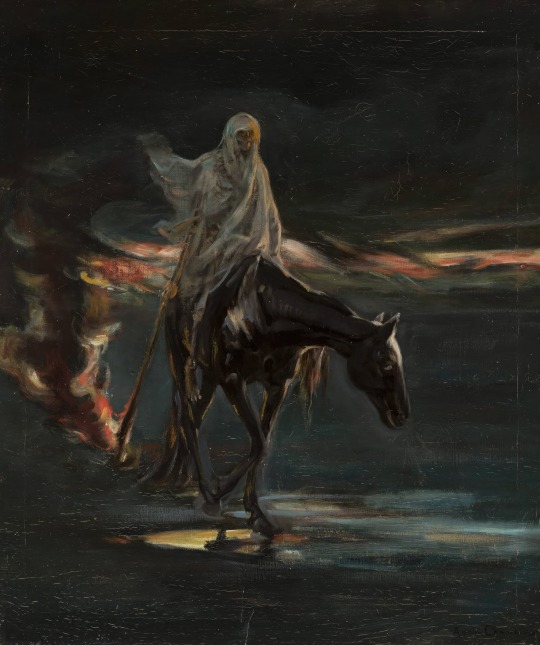
Death and conflagration, central section of the triptych “Disaster” (Adam Chmielowski, 1870)
67 notes
·
View notes
Text

“Śmierć i pożoga / Death and Conflagration” Adam Chmielowski c.1870
Central part of the “Klęska / Disaster” triptych.
45 notes
·
View notes
Text
Sukiennice Gallery of 19th-Century Polish Art Kraków
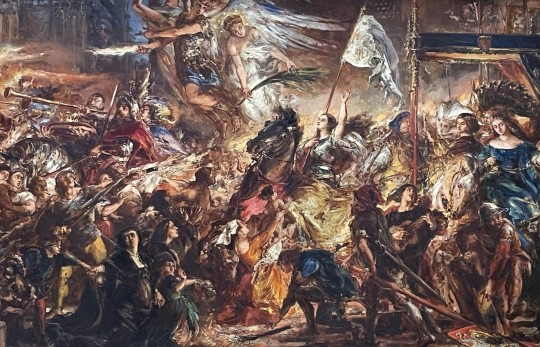
View On WordPress
#18th and 19th-Century Polish Paintings and Sculpture#Adam Chmielowski#Alexander Gierymski#Antoni Adam Piotrowski#Bacciarelli Room Sukiennice#Chełmoński Room Sukiennice#Cloth Hall#Henryk Rodakowski#Henryk Siemiradzki#Jacek Malczewski#Jan Matejko#Jan Piotr Norblin#Jan Stanisławski#Józef Brandt#Józef Pankiewicz#Józef Peszka Jan Bogumil Plersch#Josef Chełmoński#Kraków Market Square#Leon Wyczółkowski#Maksymilian Gierymski#Marcello Bacciarelli#Michałowski Room Sukiennice#National Museum Kraków#Piotr Michałowski#Pius Welonski#Siemiradzki Room Sukiennice#Stanislaw Maslowski#Sukiennice#Tadeusz Ajdukiewiz
0 notes
Text
Oto nasz Boży Dom
Oto nasz Boży Dom
Dzisiejsze święto rocznicy poświecenia naszego kościoła uświadamia nam, jak wielkim darem jest Kościół. Nasz kościół. Taki jaki mamy. I chociaż sam lubię churching, bo lubię zwiedzać inne cudowne świątynie mój kościół jest najpiękniejszy. Taki jaki jest. I taki jaki jest taki kocham. Tak. Bo kocham Kościół. Mój kościół, któremu tak wiele zawdzięczam. W Polsce jest ponad 10 tysięcy parafii, więc…

View On WordPress
#Adam Chmielowski#błogosławiona Jolanta#Błogosławiona Matka Elżbieta Róża Czacka#błogosławiony biskup Michał Kozal#Błogosławiony Ksiądz Jan Macha#Jan Paweł II Wielki#Ojciec Maksymilian Maria Kolbe#Ojciec Rafał Kalinowski#Róża Czacka#Święty Kazimierz królewicz#święta Kinga
0 notes
Text
SAINT OF THE DAY (June 17)
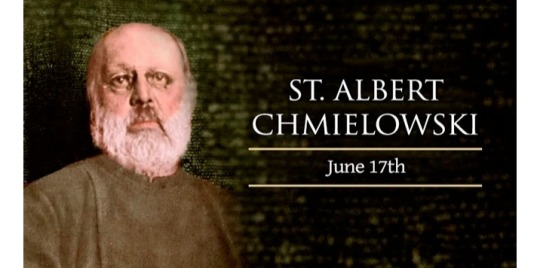
Albert Chmielowski was born on 20 August 1845 in Igołomia, on the outskirts of Kraków Congress Poland, as Adam Hilary Bernard Chmielowski.
He was one of the saints who inspired the vocation of the young Karol Wojtyla, the future Pope John Paul II.
Born into a wealthy and aristocratic family, Adam was the oldest of four children.
Actively involved in politics from his youth, Adam lost a leg fighting in an insurrection against Czar Alexander III at age 18.
In Krakow, he became a popular artist. His talent in the subject led him to study in Munich and Paris.
A kind and compassionate person, Adam was always deeply aware of human suffering and felt called to help those in need.
Realizing that God was calling Him to a life of service, he returned to Krakow in 1874, determined to dedicate his talents to the glory of God.
Instead of continuing his work as an artist, he decided to care for the poor and became a Secular Franciscan, taking the name Albert.
In 1887, Albert founded the Brothers of the Third Order of Saint Francis, Servants of the Poor, known as the Albertines or the Gray Brothers.
In 1891, he then founded a community of Albertine sisters, also known as the Gray Sisters.
The Albertines organized food and shelter for the poor and homeless of any age or religion.
Albert preached on the great crisis that results from a refusal to see and aid the suffering individuals in society.
In 1949, Pope John Paul II, who was at the time Father Karol Wojtyla, wrote a well-received play about Albert called Our God’s Brother.
John Paul II later said that he found great spiritual support for his own vocation in the life of St. Albert, whom he saw as an example of leaving behind a world of art, literature and theater to make a radical choice for the priesthood.
Brother Albert died on Christmas Day, 25 December 1916, due to stomach cancer in the shelter that he had established.
Pope John Paul II beatified him on 22 June 1983 and canonized on 12 November 1989.
The Church celebrates St. Albert’s feast day on June 17.
6 notes
·
View notes
Text

Death and Conflagration, Central Section of the Triptych “Disaster” (1870)
— by Adam Chmielowski
#painting#art#art history#spooky#halloween#dark academia#goth#gothic#gothcore#artist#classical art#oil on canvas#oil painting#historical painting#historical art#art blog#artblr#chaotic academia#artists#art community#witch#witchcraft#witch community#witchcore#witch aesthetic#witchyvibes#vampire#vampcore#vampirecore#art gallery
1K notes
·
View notes
Text

"Death" by Adam Chmielowski (1870)
"'Tell yourself that I'm the cause of all your woes if it makes you happy! Tell yourself I'm the merciless one, the murderous one, the bloodthirsty one, but ask yourself who I learned it from. I had the best master! Play at being the good man if you please, the man with no choices, but we both know what you really are. Peace? You'll never have peace, Bloody-Nine. You're made of death!'
"Logen would have liked to deny it, but it would have been more lies. Bethod truly knew him. Bethod truly understood him. Better than anyone. His worst enemy, and still his best friend."
The Last Argument of Kings, Joe Abercrombie
#joe abercrombie#last argument of kings#logen ninefingers#the first law#Bethod#i love their dynamic#before they are hanged#the blade itself#literature#quotes
9 notes
·
View notes
Text

@maximofftwinsbitch
Ecce Homo
by Adam Chmielowski.
“A familiar subject undertaken by many artists, Ecce Homo by Polish artist Albert Chmielowski depicts the moment Christ was presented by Pontius Pilate to the crowd that had gathered to watch as Our Lord was scourged, crowned with thorns, and mocked by Roman soldiers.
St. Albert Chmielowski, canonized by Pope John Paul II in 1989 , was a well-known painter in his day before leaving the trade in order to more fully live out his calling to serve the poor as a professed Third Order Franciscan. He founded two religious orders, the Servants of the Poor and the Sisters Serving the Poor, commonly known as the Albertine Brothers and Albertine Sisters.
Pope John Paul II was greatly influenced and inspired by the example of St. Albert during his own formation as a young Polish priest. John Paul II even wrote a play about St. Albert's life entitled "Our God's Brother," which was later made into a feature length film in 1997.
In the image, a beaten Jesus Christ stands with a rod, crown of thorns, and a cloak while waiting for his death.”
#St Albert Chmielowski#Ecce Homo#Jesus#Jesus Christ#God#Passion#Holy Week#reference#Catholic#Catholicism
48 notes
·
View notes
Text
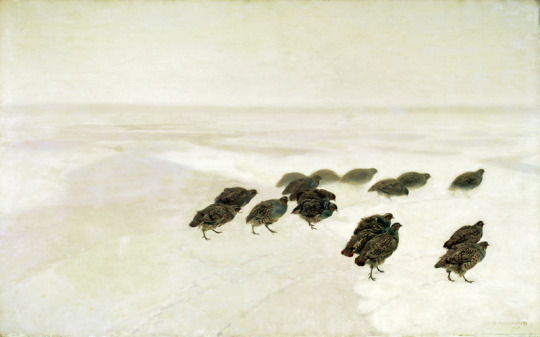
Józef Chełmoński, Partriges, 1891, oil on canvas, photo: courtesy of the National Museum, Warsaw.
約瑟夫·赫爾蒙斯基(Józef Chełmoński)《灰山鶉》"Kuropatwy/Partriges", 1891年. 華沙國家博物館
Józef Chełmoński (1849-1914),19世紀下半葉在德國受過教育的著名波蘭學術畫家最著名的作品之一,屬於其典型作品,因為展示了波蘭大自然。赫爾蒙斯基主要在馬佐夫捨地區的鄉村創造了其風景。”
Polish painter and illustrator active in Munich, Paris, and Warsaw, leading representative of realism. Born 1849 in Boczki near Łowicz, died 1914 in Kuklówka near Grodzisk Mazowiecki.
Between 1867-1871 Chełmoński studied at the Warsaw Drawing Class (School) and in the private studio of Wojciech Gerson. In 1872, he continued his studies at the Munich Academy of Fine Arts under H. Anschütz and A. Strähuber. He became familiar there with the milieu of the Polish 'Munich painters', notably Stanisław Witkiewicz, Józef Brandt, Maksymilian Gierymski and Adam Chmielowski; he was admitted as member of the Kunstverein, with which he exhibited.
In 1874 he went to Ukraine, from where he returned to Warsaw. He remained in close touch with Witkiewicz and Chmielowski, sharing with them an atelier rented at Hotel Europejski. In 1872 and 1874-1875 he makes several trips to Podole and Ukraine, the reminiscences of which will play an important role in the shaping of his artistic position.
5 notes
·
View notes
Text
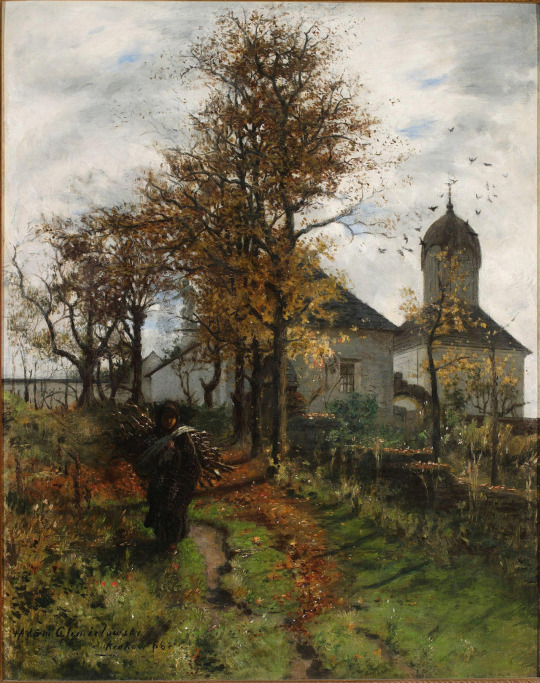
Adam Chmielowski - Abandoned clergy house (1888)
1 note
·
View note
Photo
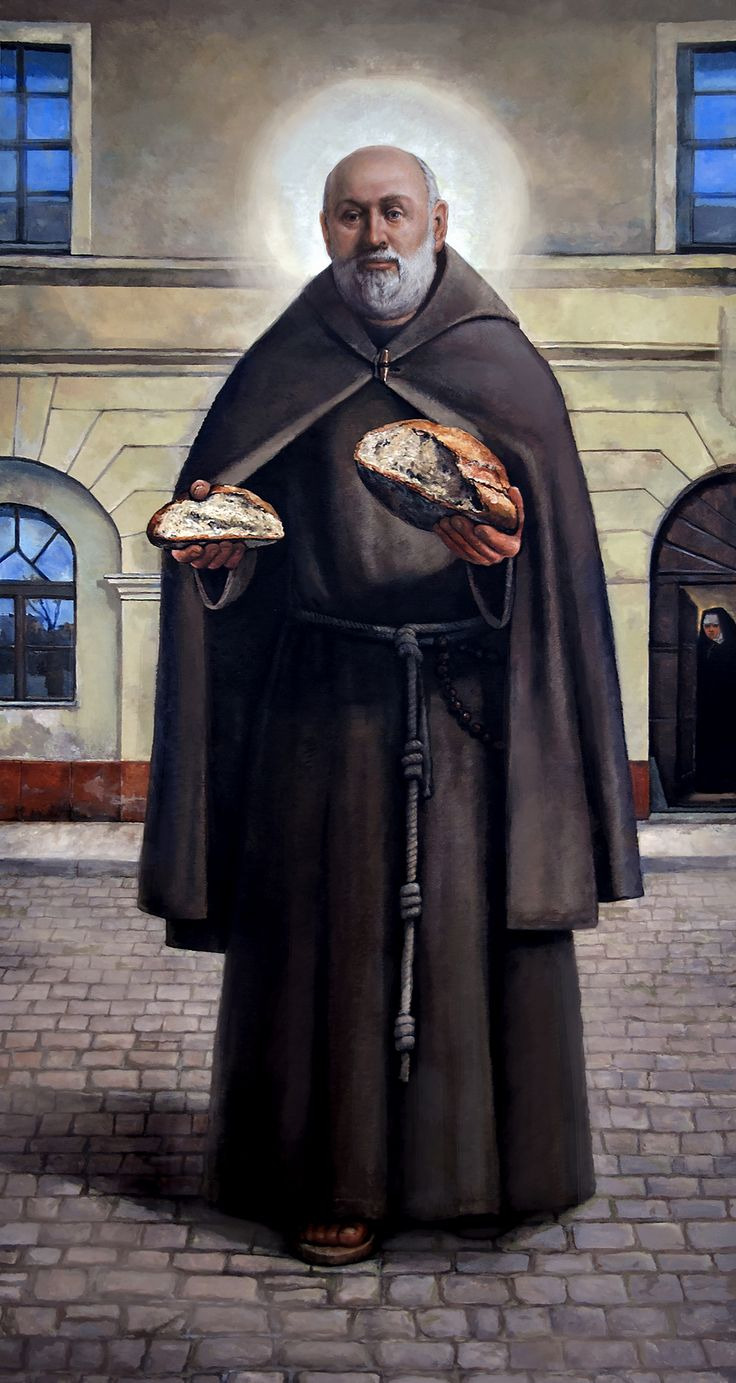
THE DESCRIPTION OF SAINT ALBERT CHMIELOWSKI
The Patron of Soldiers, Volunteers, Travelers and the Diocese of Sosnowiec
Feast Day: June 17
August 20, 1845 - December 25, 1916
"True cultural connection is the Holy Grail for brands if they want to create an enduring emotional relationship with people."
As a young revolutionary and artist in Poland, Adam Chmielowski was not a young man whom people thought would someday be a saint.
Albert (Christened Adam) was born in Krakow (Igołomia, Małopolskie, Congress Poland) in 1845, the eldest of four children in a wealthy aristocratic family. He and his siblings lost their parents while very young and were raised by a paternal aunt. Adam's initial education was in agriculture to prepare him for managing the family estate. They lived at a time when the country of Poland did not 'exist.' In the late 18th century, the once-mighty Polish nation was partitioned between Austria, Prussia (Germany) and Russia. The Polish people refused to accept this and were constantly rebelling against their oppressors. When Adam was 18, he took part in one of these uprisings. During a particularly brutal battle, a Russian grenade killed Adam's horse under him and severely damaged his leg. He was captured by soldiers allied with the Russians who took him to a woodman’s shed where his leg was amputated without anesthesia. He was then taken to a hospital for a medical assessment. While the soldiers debated on what to do with their injured prisoner, Polish allies aided Adam to escape from the hospital hidden in a coffin. The young Pole accepted his suffering stoically and learned to function with a wooden limb, offering all to God for the cause of Poland’s independence and rebirth.
Because of his actions against Russia, it became expedient for Adam to leave Poland. He initially immigrated to Belgium where he took up the study of engineering. During this period, it was discovered that he had artistic talent. He went on to France and then Germany, where he studied painting and proved his exceptional talent at the prestigious Academy of Fine Arts in Munich. When he was nearing 30, Adam returned to his homeland and became one of Poland’s most celebrated artists. His circle of friends included the best-known Polish artists, directors, actors, and writers of this time.
In spite of his growing success, Adam's life of celebrity left him feeling empty; at one point he was even hospitalized for depression. Throughout this period, Adam remained a devout Catholic and many of his works reflected this, including his masterpiece, the unfinished Ecce Homo, depicting the mocked Jesus. His need to be closer to God grew and sent him in search of God’s plan for him. He entered a Jesuit novitiate but realized quickly that God did not want him there. He became increasingly fascinated with the life and teachings of St. Francis of Assisi, and became a secular Franciscan, taking the name of Brother Albert. He even spent a brief period in a Carmelite monastery where he grew in spirituality but became reaffirmed that his place was as a Franciscan.
19th century Krakow's socioeconomic problems were many, in particular, social inequality. More than a fifth of the population was unemployed and homeless. Although many religious orders were hard at work trying to help the situation in their city, their efforts were insufficient for the ever-increasing numbers of poor. Concerned with the plight of the impoverished Poles, Adam began working in the city shelter and even opened his apartment to the homeless, eventually realizing that it was to this work that God was calling him.
In 1887 he began his 'religious life' as Brother Albert of the Third Order of St. Francis. Wearing a simple gray habit, he lived in the city homeless shelter with those he served. He soon realized that to bring the poor lasting change, the lice-infested Krakow shelter needed reform. He negotiated an agreement with the city of Krakow to become the institution's caretaker. To finance this reform, he auctioned off all his paintings. He began by banning alcohol in the shelter and requiring the residents to do work, teaching them practical skills and lecturing on the Gospels. Within a year, Brother Albert had founded his own branch of the Franciscans, the Servants of the Poor, who are sometimes called the Albertine Brothers. A few years later he founded the 'Albertine Sisters,' a women's congregation with the same intent of helping Poland's poor. They set up homes for the poor, sick, mentally ill and elderly in over 20 Polish cities. Today, the work St. Albert began continues. Sharing the life of the poor, he turned each filthy refuge into a warm shelter for Christ and encouraged the brothers and sisters of his Congregation to see Jesus in each human being.
Brother Albert worked and lived with the poor until his death in 1916 during World War I. At the time of that conflict his 'Albertines' were seen in the trenches aiding the sick and injured among the troops. St. Albert died on December 25, 1916, in a shelter he himself had opened in Krakow. His beloved Poland regained its independence and became a 'country' again shortly after his death, in 1918.
St. Albert was an inspiration to St. John Paul II. When Karol Wojtyła began his studies at Jagiellonian University, he was a young, promising actor, playwright, and poet. Like the young Adam Chmielowski, he found his calling to serve God and the Church was stronger than his love for the arts. John Paul II later said, that he found great spiritual support for his own vocation in the life of the Polish saint whom he saw as an example - leaving behind a world of the arts to make a radical choice for the priesthood.
In 1949, the young Father Karol Wojtyła repaid his spiritual debt by writing a play about St. Albert titled, 'Our God's Brother.' A Kracovian urban legend had it that Brother Albert met Lenin (who lived in Krakow after being expelled from Russia) and debated him on how to best alleviate poverty. The play features imagined dialogues between the saint and the communist revolutionary. (In 1997 the play was made into a film starring the late Scott Wilson.) As Cardinal Wojtyla, the future pope oversaw the apostolic process for Albert Chmielowski's cause for beatification. After his election to the papacy, John Paul II beatified St. Albert in 1983 and canonized him in 1989.
In today's self-centered age, when professional success is seen as the greatest good, St. Albert Chmielowski - who gave up the life of a celebrity painter to serve Christ by helping the poor - challenging us to ask if we focus too much on worldly goals and ignore life's true meaning.
Source: Guard of Honor of the Sacred Heart of Jesus
0 notes

